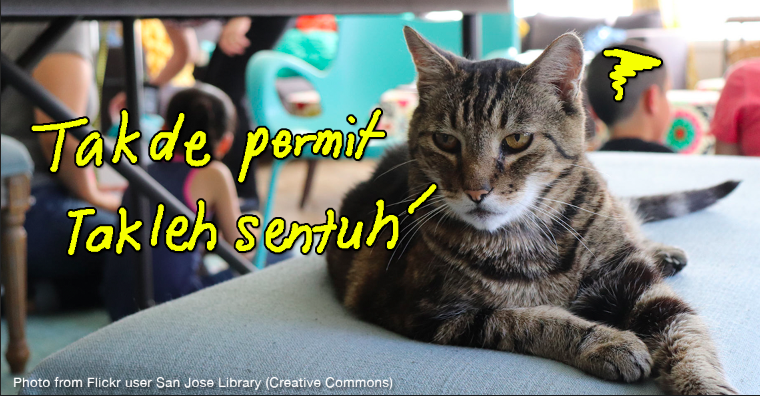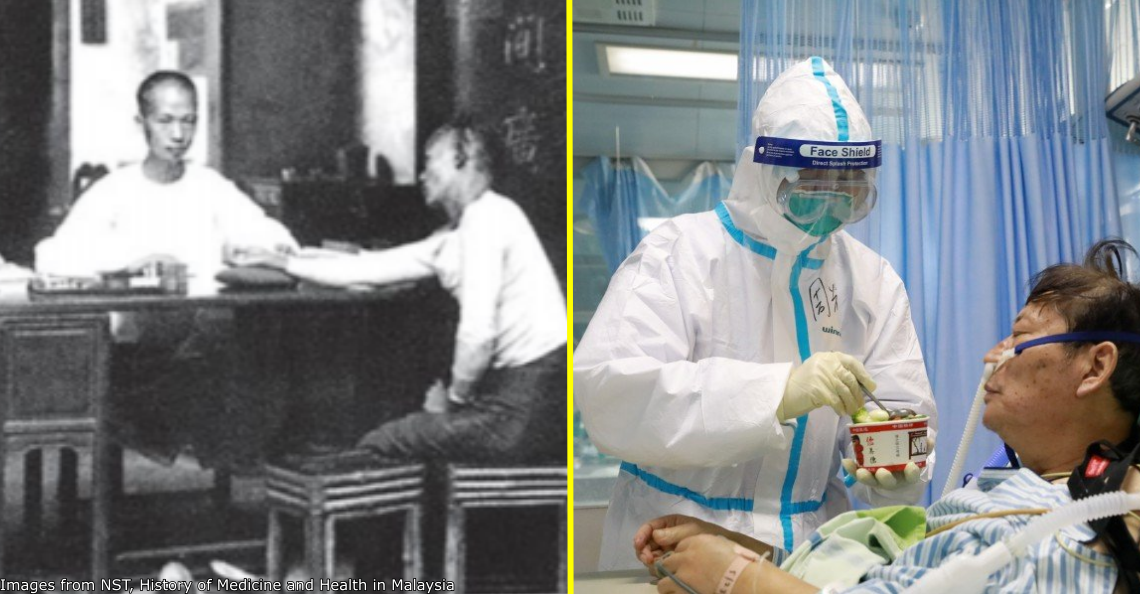6 super-gross animal parts Malaysians eat as ‘medicine’
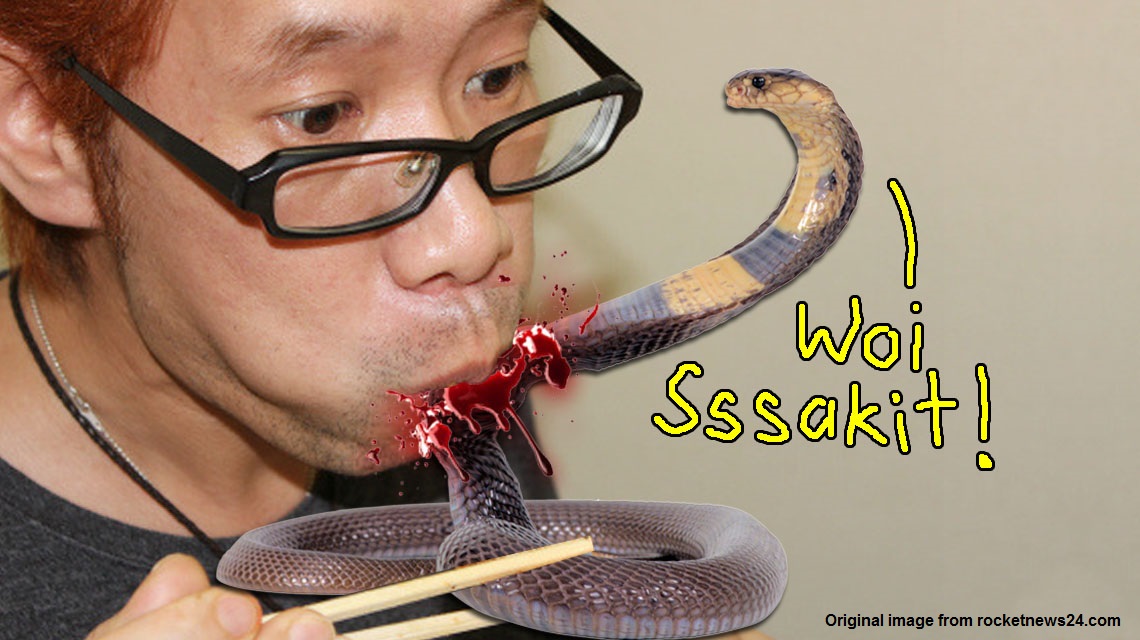
- 252Shares
- Facebook210
- Twitter3
- Email14
- WhatsApp21
You’ve probably seen one of those shows where people eat all kinds of weird, exotic stuff on National Geographic. (yep, we’re thinking Andrew Zimmern‘s shows). Every country prolly has some kind of weird cuisine of its own – like half-formed duck foetus from the Philippines (eeew), live maggot cheese from Italy (urrghh), still-beating cobra heart from Vietnam (yurrrck)! Not everyone can stomach it, but dunno why people like to watch others eating it. 😯
Malaysians eat weird things too! Although not always as a fancy restaurant or street food delicacy. Sometimes we eat strange things for ‘medicinal’ purposes. Yep, we’re talking about traditional Chinese medicine. Here are 6 exotic animals (or animal parts) that Malaysians makan. But some of them are super gross, don’t say we didn’t warn ugaiz.
We know we’re late a bit, but in conjunction with Animal Day last Sunday (4 Oct), we thought this would be a great topic to write about and hopefully raise some awareness.
1. Saiga horns
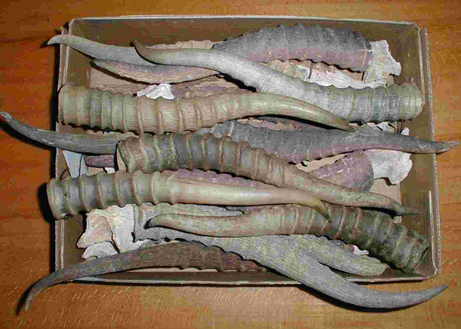
So first on our list are saiga horns. Huhh, sai- what? We know rhinos have horns and bulls have horns. And these 10 animals on this list have the BEST horns in the animal kingdom. But what the heck is a saiga!?
[interaction id=”55c1cd1b1e28de9a3242f7bc”]
The third answer is correct! A saiga is actually a type of antelope that’s CRITICALLY endangered. There are only around 250,000 of them left in the world! So why are these funny-looking fellas critically endangered? Because they are hunted for their horns lor. If that’s not bad enough, in May 2015, nearly half the population mysteriously DIED like some kind of apocalyptic horror movie! Experts dunno what’s the cause…
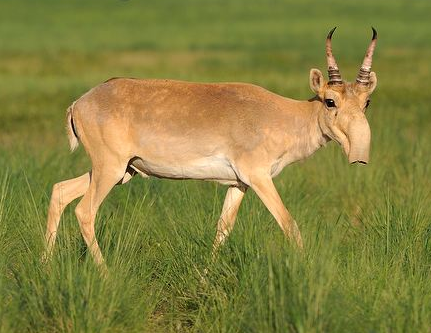
It’s ILLEGAL to hunt saigas, but poachers still do it because there’s big money in their horns. They export them to countries like Malaysia where they’re are sold in Chinese medicine shops. One batang, which usually weighs about 100g-200g, can fetch up to US$4,600 (or RM17,800)!
People believe the horns can reduce heatiness in the body (seriously, why not just drink a lot of water?). Nope, you don’t chew on it like a KFC drumstick. What they do is grind them down into powder or cut them in slices, then boil them water for drinking. Saiga horn bits are also said to be contained in those Chinese ‘cooling drinks’. Although the core of the horn is not used as medicine, some local sellers SWEAR it can ward off evil.
2. Porcupine bezoar
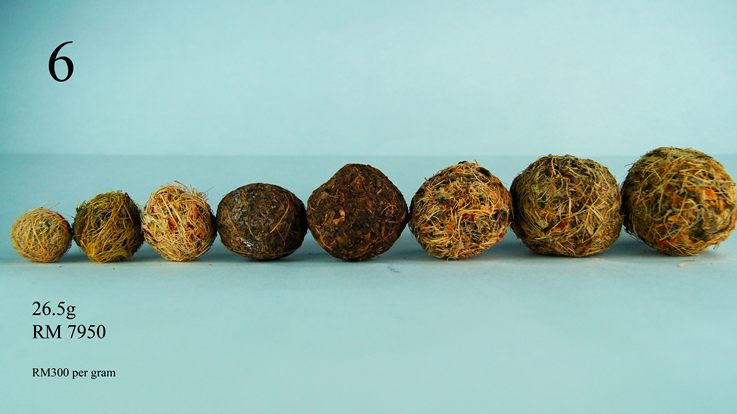
Don’t worry, we didn’t wrongly put a picture of birds’ nest. This is what porcupine bezoars look like. Bezoars are gallstones that form when injured porcupines eat herbs to heal themselves (something like cat hairball lah). Which explains why they kinda look like birds’ nest. It’s all herbs and stuff gathered into a ball in their middles. In BM, it’s called guliga landak.
So to extract it, you have to kill the poor porcupine first, but this one there’s no law against it. In fact, there are farms in Sabah breeding porcupines specifically for this. Literally born to die! Besides porcupines, people have harvested bezoars from cows and monkeys.
Most shops sell them raw as stones or powder. Depending on the grade (ya, got grade), their prices can range from RM450 to RM900 for 0.37 gram. Stones can go for RM25,000 to RM72,000, but that’s nothing compared to this blog we found, selling 1 biji for RM98,000! When soaked in water, this ‘cure-ALL medicine’ tastes disgustingly bitter, but people drink it anyway coz they believe it gets rid of toxins in the body. Or so they say – it’s NEVER been scientifically proven.
3. Snake gall bladder pills
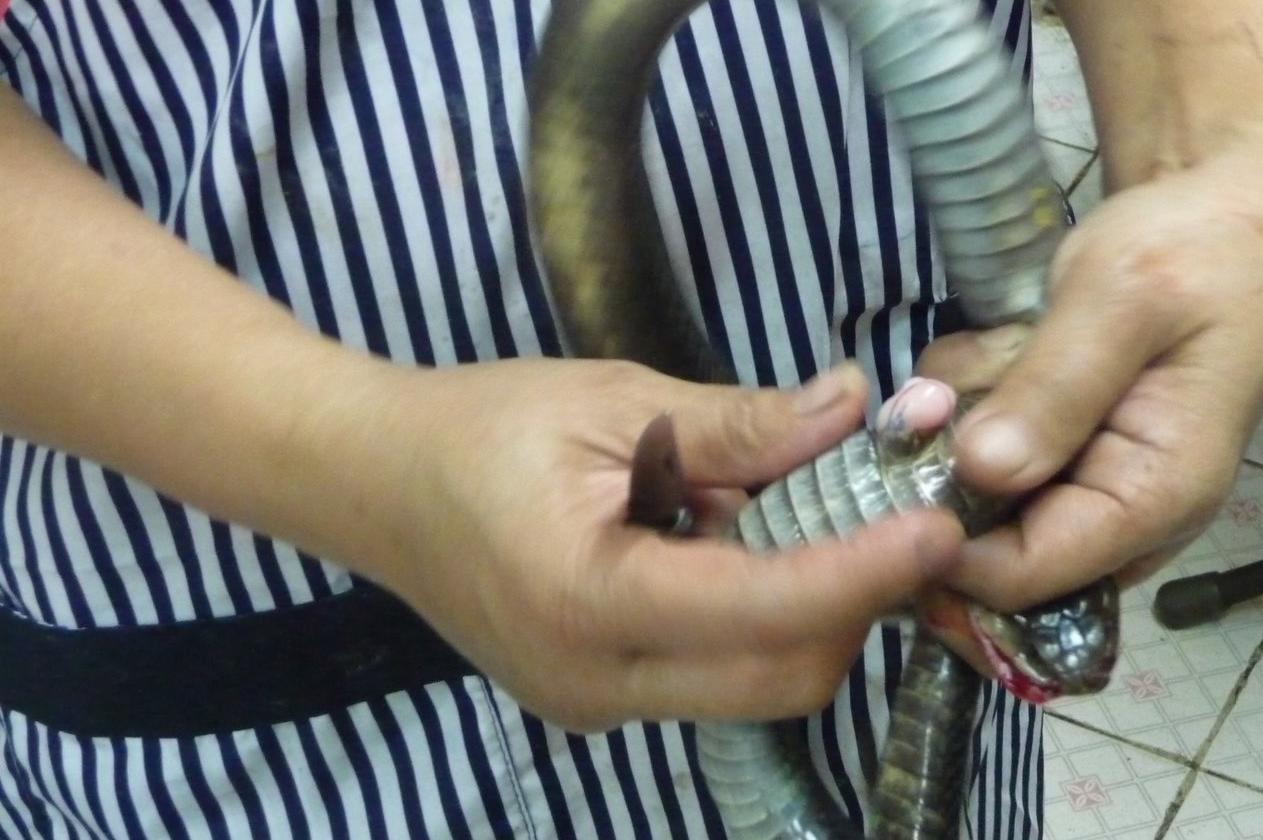
Not to be confused with snake wine. Yes, seriously there’s such a thing as snake wine – and this woman from China got bitten by a snake she thought was already dead and pickled in her bottle. Eeep!
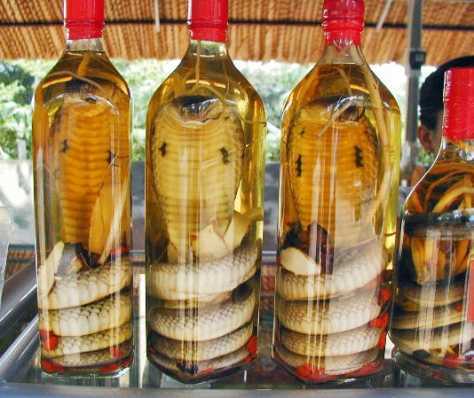
Snake gall (aka bile) bladder pills are illegally brought into Malaysia from Hong Kong and China. The South China Morning Post followed a story on WHY people eat snake gall bladder…and like every other weird Chinese medicine purpose, it supposedly cures ‘many illnesses’. Walao, traditional medicine is better than magic!
“I’ve been taking (snake bile) for over 10 years. It makes me vigorous.” – an old customer in Hong Kong, SCMP
Stop singing Nicki Minaj’s Anaconda. That’s not it! He meant energy and health generally, of course… The shopkeeper said it “strengthens qi and improves blood circulation, clears phlegm and wind from the body, balances the endocrine system, speeds up the metabolism and slows ageing.” Wahh! But ironically, as it ‘cures’, it can also bring diseases, like infection with snake parasites or acute hepatitis, if the gall bladder is not cooked properly.
4. Deer tendon

Out of all these weird things Malaysians take as traditional medicine, deer tendon may the only one that’s also eaten as a meal rather than just medicine. We found so many pictures of broth or stewed dishes cooked with deer tendon.
So what do tendons do? People believe that it strengthens a person’s tendons (you don’t say) and bones in old strains from injury, in weakness in the hands and feet, and it can promote healthy lungs.
But before you rush out to buy deer tendon, we have to tell you that it came under some controversy before when Hong Kong’s Consumer Council caught shops cheating its customers by selling cow tendon instead! If you may bought ‘deer tendon’ before and you’re not sure you kena con or what, don’t worry:
“The practice of selling cattle tendon as deer tendon is quite common… eating cattle tendon doesn’t harm your health. But deer tendon is rarer and more expensive.” – Connie Lau Yin-hing, HK Consumer Council CEO, South China Morning Post
5. Dried lizard
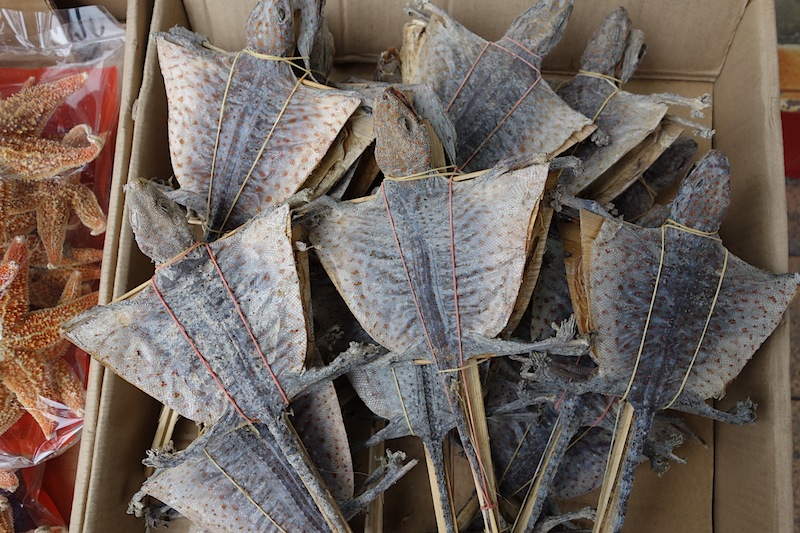
If there’s one Chinese medicine thingy that has lasted the test of time, it’s this Tokay gecko, aka dried lizard. People have been taking it from 1,000 years ago. But don’t go and tangkap your ordinary house lizard, dry it up and eat it. This is a different species of lizard! Here’s what it looks like alive:
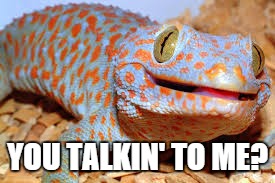
It might gross some people out, but this nocturnal creature kononnya can help women get pregnant with baby boys and can also cure erectile dysfunction (because the lizard’s mating tends to last as long as a few days). They can also be made into pills and taken for asthma, hives, eczema, tuberculosis and HIV!
It’s the HIV cure reason that drives sales up and the lizards to near extinction, but this myth has been busted by TRAFFIC the wildlife trade monitoring network. Dealers claimed that large lizards weighing over 300g or over 400g were valued at RM3.26mil (wuuut!?), however TRAFFIC doesn’t believe that their statements are credible.
Strangely, we didn’t find any scientific studies disproving it for other diseases other than HIV, nor did we find studies that said it works. Except for this Chinese traditional medicine website… that claimed when tested on male mice, their testes grew heavier.
Unfortunately, people also say its urine is DEADLY, so don’t say CILISOS recommended this to you.
6. Bear bile

Ugh, another bile product!? This one has really tugged at more heartstrings around the world, coz you all probably know the story about cruel bear bile farms.
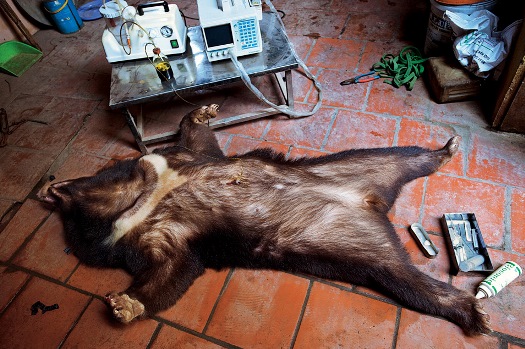
China has the world’s largest bear bile farming industry. You might have guessed that already, but did you know, in Malaysia, the highest percentage of shops selling bear products are shops from Johor Baru, according to a study. The second highest is Penang, followed by KL, Kota Kinabalu, and Kuching. There’s HUGE demand for bear bile in Chinese meds, even though it’s illegal.
Either they kill the bear for the gall bladder itself, or keep them in those horrible cages and keep extracting their bile.AGAIN.and.AGAIN. Sounds like the first option is more merciful, but it still sucks. 😥 Pills make it easier for shop owners to evade the authorities, and 1 biji ranges from 40 sen to RM96. For the whole gall bladder itself, each costs RM30 to RM240, but can go up to over RM3,000.
Does bear bile really work or is it just a placebo? Sadly for bears, their bile is the golden ticket – it contains a lotta ursodeoxycholic acid (UDCA), useful for treating liver and gall bladder conditions. But there are herbal and synthetic alternatives, and even traditional medicine practitioners agree that no one’s health will suffer if they don’t use bile! So you can live without it.
Do traditional Chinese meds actually work?
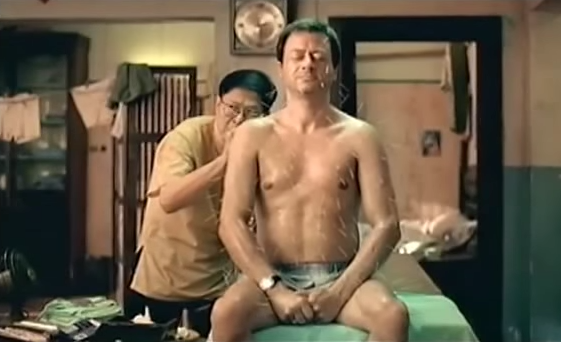
“Traditional Chinese medicine (TCM) has a history of thousands of years. It is formed by summarising the precious experience of understanding life, maintaining health, and fighting diseases accumulated in daily life, production and medical practice.” – Jingqing Hua & Baoyan Liub, sciencebasedmedicine.org
If this is true, then why has Western medicine always been skeptical of TCM? In the article we got this quote from, the writer gives his argument why TCM is a “pre-scientific superstitious view of biology and illness”… in other words total bollocks. Ask a modern person today and he might have doubts about letting quacks stick 1,001 acupuncture needles in him or brewing some mumbo-jumbo potion and calling it “medicine”.
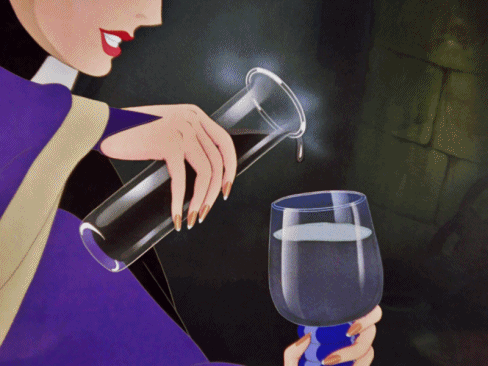
While, there’s no scientific proof TCM can cure major diseases like cancer or HIV, it can still help with other health aspects, like bear bile for liver and gall bladder conditions. But that’s the ONLY thing out the 6 items on this list that have been known to work.
And you know what, TCM has gone through a major perception change in recent times. We found a post by the University of Minnesota stating that acupuncture and herbal medicine are supported as EFFECTIVE after experts researched it further! Even the US government recognises it to a certain degree. For acupuncture, they classify the needles as Class II medical devices – which means safe for general use by licensed practitioners. As for herbal medicine, it’s classified as ‘dietary supplements’ like other botanical medicines.
There’s still a question of ethics…

Ok, so TCM may have certain health benefits, but there’s still an issue whether the practice is ethical. Some of these ‘exotic’ animals are actually ‘endangered’. What’s the difference? Exotic means that the animal is not native to our home country. For example, saigas are exotic, because they’re not found in Malaysia. Endangered on the other hand means that animal is at the risk of extinction.
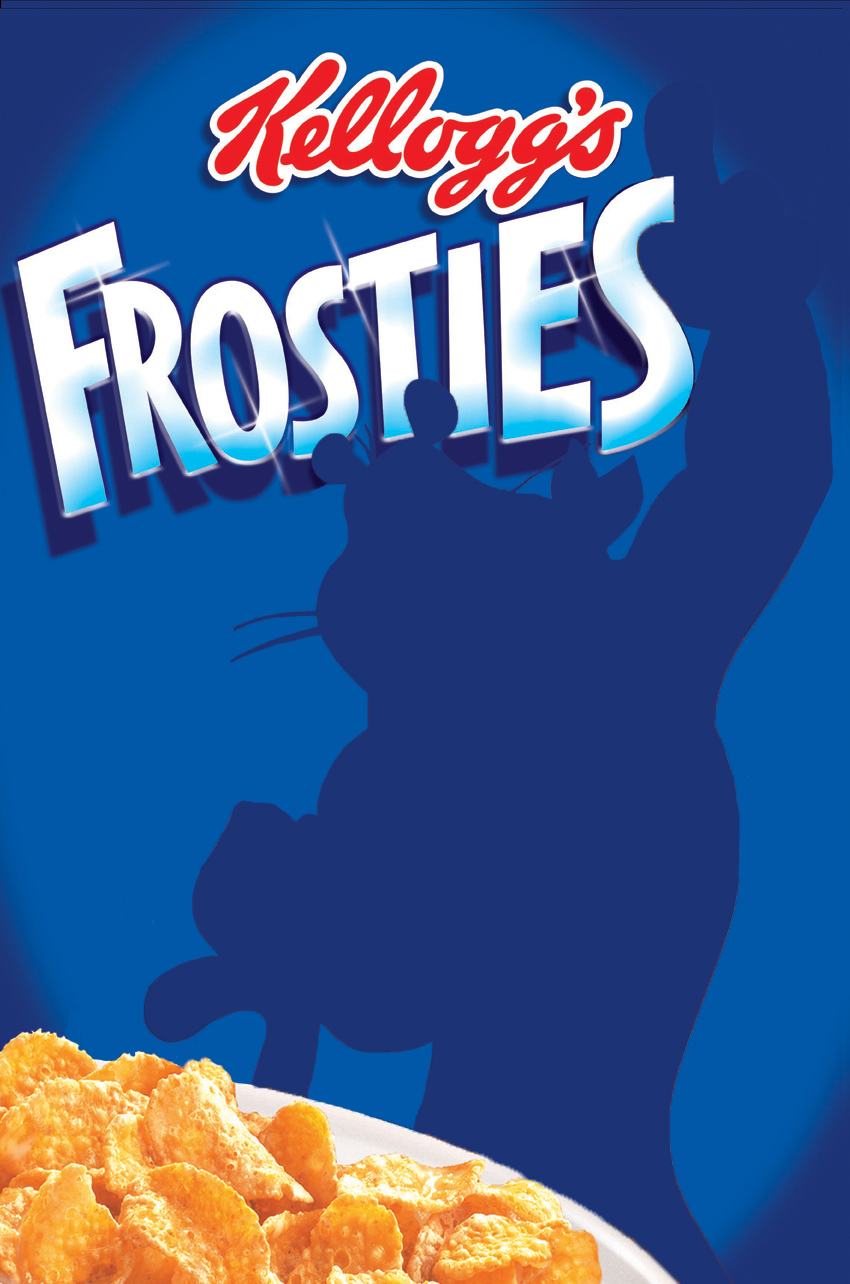
If we continue to eat, kill, and threaten endangered animals indiscriminately, pretty soon they’re gonna go extinct altogether. Remember the dodo bird? We also wrote an article about what were to happen if tigers went extinct…
Cruelty is another question of ethics. We talked about how bear bile farms keep the animals in unsanitary conditions and constantly subject them to the painful bile extraction. Else Poulsen, author of the book Smiling Bears described:
“Each bear lies down, permanently, in a coffin-shaped, wire mesh crate for his entire life—years—able to move only one arm so that he can reach out for food… Without proper anesthetic, drugged only half unconscious, the bear is tied down by ropes, and a metal catheter, which eventually rusts, is permanently stuck through his abdomen into his gall bladder.” – Else, quoted from Animal Legal Defense Fund
Not that we’re saying developing Western medicine is 100% ethical, coz they used to test on mice and rabbits too. Thankfully, they’ve found alternatives to animal testing. Phew! Then again in TCM, practitioners also said people won’t suffer if they stopped using bear bile…
So that’s the aim of World Animal Day – to make people aware, to get them involved. If they could get all the animals advocates around the world to stop illegal trading, if people would just realise they can live without taking all this ‘medicine’, animal populations will thrive!
So it all boils down to making a choice. You can believe in the effectiveness of TCM, but there are plenty of alternatives. Or you could choose to end these cruel practices once and for all. Since it starts with humans, it has to end with humans. And if you know a shop selling illegal animal parts, you can report them to organisations like MYCAT, TRAFFIC, Wildlife Conservation Society-Malaysia Programme or WWF-Malaysia. At the end of the day, the choice is yours.
- 252Shares
- Facebook210
- Twitter3
- Email14
- WhatsApp21

